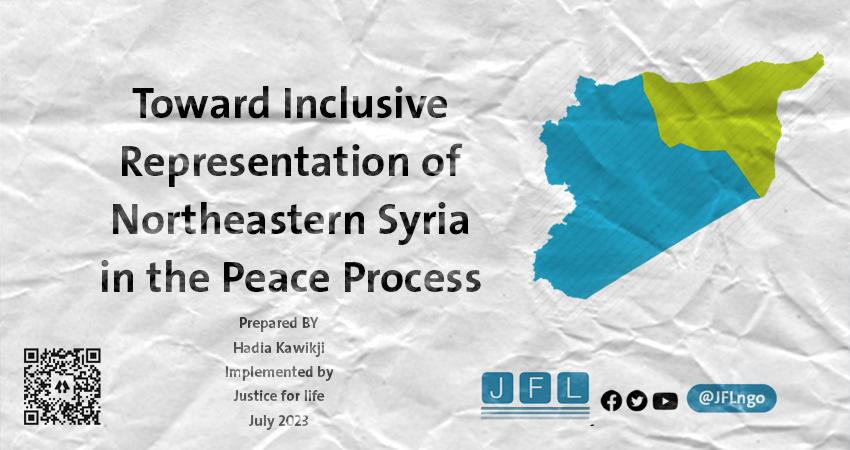The popular uprising in Syria in 2011 had a significant role in highlighting the question of representation and legitimacy. On the one hand, this is due to the multiple areas of influence and the different powers in control of these areas, their eligibility to represent the population politically, and their presence, in the first place, in the negotiating political process. On the other hand, this is attributed to the lack of political action and democratic practices that has beset the Syrians over more than four decades by virtue of the one-party policy imposed by the Syrian government under Article 8 of the 1973 Constitution. The government has persisted in this policy despite the absence of that article from the 2012 Constitution.
The problem of legitimacy and representation seems to be complex with historical roots in the region of northeastern Syria or what is known as the Syrian Peninsula, which extends over three governorates: Deir Ezzor, Al Raqqah, and Al Hasakah. This region, which is characterized by ethnic and religious diversity, suffered from marginalization by the central authority in Damascus, apart from being an open arena for the influence of foreign players due to its geographic location and demographic composition. This has negatively affected the rightful representation of its people and the expression of their interests. The scene did not change after 2011 with the control of the Autonomous Administration of North and East Syria (AANES) over the region by 2019 and its monopoly over administration through its governance and military structures, besides its political representation through its arm, which is called the Syrian Democratic Council (SDC). This signals the exclusion of the other components in the region. Besides the problematic of local legitimacy, there is the problem of political representation of the region in light of the natural resources and relations that its rulers have. The Autonomous Administration of North and East Syria is still absent from the negotiating tracks due to several self-related and objective reasons, thus making its experience a cause of doubt in the long run.
This paper seeks to unpick the problems of legitimacy and political representation for the region with a view to finding realistic political solutions to have fair representation of the people of the northeastern region of Syria, with all its components. The paper used both the descriptive and analytical approaches. It included the results of field work, which covered 16 semi-structured interviews with dignitaries from the region and experts and researchers, alongside members of political bodies that represent popular action in the region. The research is also based on the results of three focus groups that were held in the field in the governorates of Al Raqqah, Al Hasakah, and Deir Ezzor with political and local actors, with a desk review of what was written and published about the issue of the research.
The paper reviews the political representation of the key components of northeastern Syria before and after 2011. It refers to the narratives of the political bodies represented in the political process since it was launched in 2012. It then provides conclusions and recommendations that could help in a fairer political representation for northeastern Syria locally, as well as in the UN-sponsored negotiated political process.
Read more: Toward Inclusive Representation of Northeastern Syria













